High-Power Infrared Emitters for Advanced Driver Assistance Systems
I was a bartender the summer before my senior year in college, mostly pulling taps and popping tops, nothing fancy. We closed at 4:00 AM. One night, driving home, I fell asleep at a traffic light. Seems I kept my foot on the brake, but I don’t know how long I was out, a few light cycles at least. Luckily there was no one else on the road so when I woke startled, no damage was done. If you have driven for a few years or taken long road trips, I bet you have had those moments where you get a little tired, close your eyes for a little longer than a blink, maybe turn up the music and sing, maybe roll down the windows to keep yourself awake. Worldwide, it is estimated that at least 10% of all road crashes are fatigue-related. The U.S. National Highway Traffic Safety Administration estimates that every year 100,000 police-reported, drowsy driver crashes result in nearly 800 fatalities and 50,000 injuries. It is a serious problem, and car manufacturers are rolling out a solution.
Manufacturers have introduced a drowsy driver monitoring system as part of an Advanced Driver Assistance System. In Europe in 2024, all new cars must be equipped with a camera-based driver monitoring system to prevent drowsy driver-caused accidents. In America, it tends to be the high-end cars that will initially have the option and then trickle down over the next five years to all cars. The driver monitoring system must be able to assess the alertness of the driver. The feature is CMOS-camera based, like the cameras found in smartphones or security systems, with proprietary software to detect the eyelid blink rate. The camera can be located behind or adjacent to the rearview mirror mount or in the dashboard and has the field of view ‘focused’ on the face. The video camera relies on an external light source to illuminate the driver’s face, sunlight during the day and a high-powered infrared emitter at night.
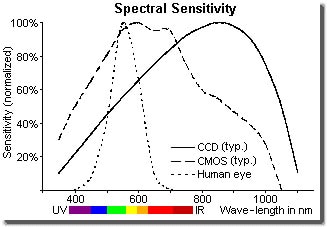
CMOS sensors are sensitive to wavelengths from approximately 350 nanometers (nm) to 1050 nm. Drowsy driver systems use infrared emitters with peak intensity of either 850 nm or 940 nm, for example, the VSMA1094250X02 from Vishay. “High-power” plays out in two ways. First, the emitters can produce high intensity. As infrared chips go, the VSMA1094259X02 emitters are large at 0.042 inches x 0.042 inches or 1.07 mm x 1.07 mm. The package is 3.4 mm x 3.4 mm. In the VSMA1094250X02 there are two chips, double stacked, which produce a typical intensity of 1350 mW/sr with a pulsed forward current of 1.0 A. Second, the emitters are designed for high drive currents, up to 1.5 A (DC) and up to 5 A (pulsed). At 5 A, the emitter has an intensity of 6000 mW/sr. Given this high intensity, the drowsy driver camera system will have a relatively small footprint, needing only one infrared emitter.
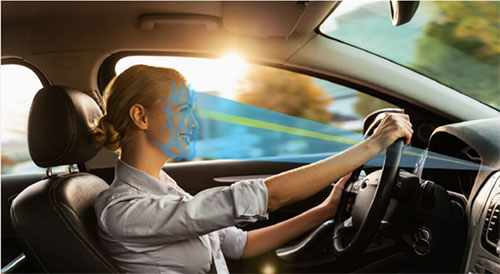
Unlike security cameras that feature a wide field of view, the drowsy driver system has a much narrower field of view, focusing only on the driver's face and eyes. The infrared emitters have lenses that compliment this viewing angle by featuring an angle of half intensity of ±28°; half the emitted power is focused on this narrow conical region. Any emitter used by the automotive OEMs must meet automotive standards as defined by AEC-Q102 and have an operating temperature of up to 125°. To address safety concerns related to the high infrared output, some solutions design in proximity sensors like the VCNL3040 to shut off or reduce the output of the emitters when a person gets too close to the emission area. To determine if cabin lighting is sufficient to detect the driver’s eyes, an ambient light sensor like the VEML6031X00 is required.
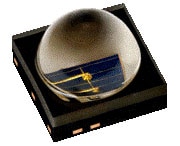
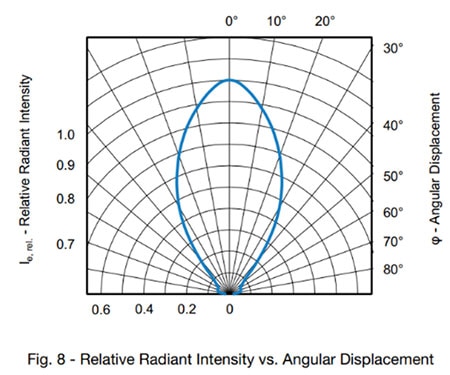
Manufacturers are also working on expanded occupant sensing as part of an Advanced Driver Assistance System. To quote Bosch’s literature, “the cabin monitoring solution provides a full understanding of driver, occupants, and the entire cabin scene. Combining our automotive domain understanding with a strong expertise in computer vision and sensor systems, we enable superior safety and comfort, and make automated driving a safe experience”. When driver and passenger airbags were first introduced, both airbags deployed in a crash. Insurance companies made the OEMs aware that the cost of replacing an airbag which deployed in front of an empty passenger seat was high and encouraged them to create systems that detect the presence of a passenger. All cars in America and Europe now have such a system. There is an indicator LED that is illuminated in the passenger cabin when the passenger seat is occupied. This works fine for the front passenger-side airbags but there are airbags in the B-pillar and side airbags in the rear seats that require the same feature and deploy when occupied. Camera-based cabin monitoring systems will enable this feature by being able to identify where all the passengers are located. Sound systems are becoming more and more sophisticated and will change tuning if there are passengers in the front and rear seats versus just in the front seat. Climate control also can be ‘tuned’ depending on where passengers are located and the angle of the sun. With the emergence of autonomous vehicles, it is possible that there won’t be a front seat and rear seat but more of a living room setting. In this case, safety, climate, and entertainment systems will truly need to know the location of each passenger in the vehicle.
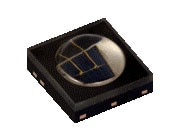
Like for the drowsy driver detection, the basic elements of cabin monitoring are a camera or cameras and high-power infrared emitters. Rather than narrow-angle emitters, wide-angle emitters will be used for homogenous distribution of light within the entire cabin. An emitter like Vishay’s VSMA108575X02 will be used. It has the same emitter chip, same double stack technology, and same thermally conductive package as the VSMA109425X02, but its lens differs. Rather than focusing the light, it spreads it out. The angle of half intensity of this emitter is ±75°. Since the same amount of light is being spread over a wider angle, the intensity in any one area will be less. With a pulsed 5 A forward current, the VSMA108575X02 has an intensity of 1600 mW/sr. Again, the emitters are needed when the cabin is dark. This may be at night or when heavily tinted windows are in place.
Drowsy driver detection is here. And, in a few years, it will be a feature on every new car. Cabin monitoring systems are coming soon. Autonomous vehicles, especially task-specific vehicles like shuttles to and from a common location, are being tested on city streets today. Safety and comfort will improve with interior camera systems featuring high-power infrared emitters.

Have questions or comments? Continue the conversation on TechForum, DigiKey's online community and technical resource.
Visit TechForum





